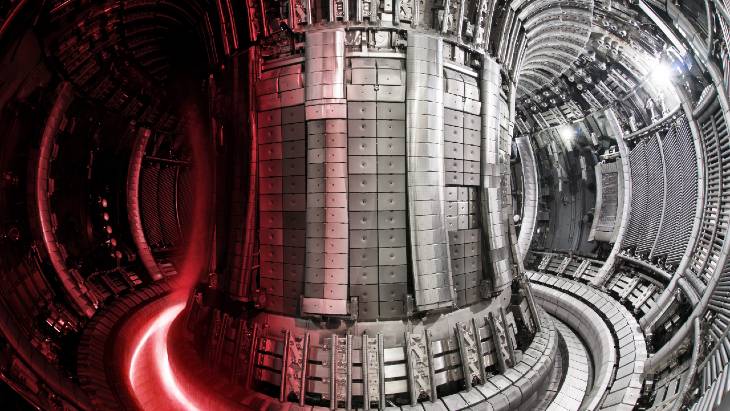Renewable and low-carbon energy
The production, transformation, storage and distribution of clean energy is critical to achieve sustainable development goals and limiting global warming. As of today, the energy sector is by far the biggest source of human-caused emissions: heat and electricity generation is responsible for more than 30% of the global greenhouse gas emissions (2022). To address climate change and protect the planet, this share needs to be drastically reduced. CERN’s technologies can facilitate the transition from fossil fuels towards a renewable and low-carbon energy mix.
Some examples of relevant poles of competence and related projects/collaborations:
Compact magnetic confinement fusion energy systems

Fusion research is undergoing an exponential growth in terms of new projects and unprecedented public and private investments. In this context, CERN has an opportunity to contribute with its scientific, technology and organizational expertise and play its role of large Research Infrastructure capable of enabling the integration of research themes and communities, and drive innovation in close collaboration with European Research Infrastructures and Industries. CERN can provide expertise and technical support in critical domains for magnetically confined fusion, including:
- Research and development activities in magnet science, including powering and protection of large superconducting magnet systems;
- Cryogenic and vacuum technologies for large superconducting magnet systems;
- High heat flux and radiation damage on materials and components;
- Test infrastructure and testing of materials, components and systems;
- Integration, automation and control of complex technical systems;
- Nuclear regulatory matters for large scientific experiments.
CERN has been collaborating with ITER for many years through a framework collaboration that generated more than 20 implementation projects in the last 15 years.
CERN has supported also Tokamak Energy, the first private company working on “desktop” fusion reactors, through numerical simulations of quench propagation and testing in the CryoLab up to 26.2 T one of their HTS Quality Assessment magnets for spherical tokamaks.
Accelerator driven systems and advanced small nuclear reactors
Accelerator-driven systems (ADS) are very promising particle accelerators applications for transmuting nuclear waste and generating electricity. By efficiently burning the minor actinides, ADS could conceivably transform the landscape of the waste-disposal and storage problem. Additional advantages are flexibility of fuel composition and potentially enhanced safety: nonfissile fuels such as thorium can be used in ADS without incorporating uranium or plutonium into fresh fuel; and an ADS can be shut down simply by switching off the accelerator (no risk of supercritical accident). The overall potential of ADS has been understood for two decades, but technological evolution is still necessary to improve the outlook for actual implementation. CERN has extensive fully applicable know-how in particle accelerators, beam windows and diagnostic systems. More in general, CERN expertise in advanced materials, thermal control and radiation effects could also greatly benefit the development of generation IV compact nuclear reactors (e.g. lead or lead/bismuth cooled fast reactors) with improved safety, sustainability, efficiency, and cost.
CERN is collaborating at institutional level with SCK-CEN on the MYRRHA project, contributing to critical areas such as pulsed accelerators, safety, cryogenics, beam dumps, RF technology, reliability and beam diagnostics. CERN is also supporting private companies like Transmutex on topics related to technologies for particle accelerators, high-power targets and neutronics for nuclear power devices.

Technologies for fuel cells, batteries, solar panels and electrolyzers
CERN expertise can contribute to the development of many clean-tech solutions. As an example, CERN developed NEG (not-evaporable getter) thin film technology to provide the large and linear pumping required for the Large Hadron Collider). This technology can be used in thermal solar panels to maintain vacuum conditions maximising thermal insulation, reducing thermal losses and increasing the panel efficiency. This was done in particular by the company SRB Energy, which provided a large installation of high-temperature solar panels to the Airport of Geneva for both heating and cooling applications.
Other more recent examples are the CIPEA projects Compact Material Analysis for Batteries & Fast Fuel Cell Development (aiming to develop a compact and affordable pulsed neutron facility optimized for in-situ analysis of battery and fuel cell electrodes in collaboration with DAES) and Compact and low-cost light simulator for indoor photovoltaic cells development (integrating CERN’s ACCURATE chip into a characterisation tool for photovoltaic cells and IoT devices).

